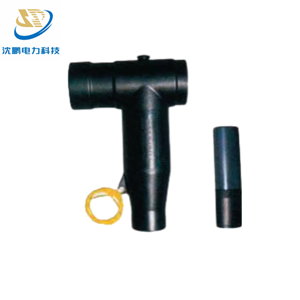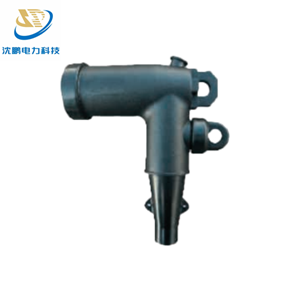
The Elbow Connector: The Flexible Hero of the Distribution Grid
2025-09-30 13:45Look at a modern power distribution network—the system that delivers electricity to our homes and businesses—and you'll likely spot a compact, elbow-shaped device tucked inside a switchgear cabinet or a pad-mounted transformer. This ingenious component is officially known as a separable insulated connector, but most people in the industry simply call it an Elbow Connector.
While it may look simple, this "flexible hero" is a cornerstone of reliability and safety in today's power grid.


1. What is an Elbow Connector?
An elbow connector is a compact, fully insulated, and shielded device designed to connect and disconnect medium-voltage power cables to equipment like ring main units (RMUs) and transformers. Its iconic 90-degree elbow shape isn't just for show; it's a masterpiece of ergonomic design that allows for easy installation and operation in tight spaces where traditional straight connectors would not fit.
2. The Widespread Application: The Backbone of Modular Grids
The elbow connector's compact design makes it the perfect choice for the enclosed and space-limited environments of modern distribution equipment:
In Ring Main Units (RMUs): RMUs are the critical nodes that control and protect the distribution network. Elbow connectors are used to seamlessly link incoming and outgoing cables to the unit, creating a flexible and modular "plug-and-play" system for the grid.
In Pad-Mounted Transformers: These ground-level transformers that serve neighborhoods rely on elbow connectors to bring power in from the distribution lines and send it out to the consumers.
Its versatility and small footprint have made it the default connection method for insulated, shielded medium-voltage systems worldwide.

3. The Game-Changing Advantage: Live Switching
The most significant feature that sets the elbow connector apart is its ability to be safely energized (connected and disconnected) while the cable is live. This capability, known as "hot switching" or "live working," is a revolutionary advantage.
Here’s why this matters so much:
Minimized Power Outages: Before the advent of elbow connectors, any work on a connection—whether for maintenance, testing, or adding a new customer—required a planned power outage. This meant inconvenience and economic disruption for everyone downstream. Now, crews can safely perform these tasks without turning off the power. The average person on the street never even notices the work is being done.
Enhanced Safety for Personnel: Elbow connectors are engineered with safety as the top priority. They feature a built-in test point that allows technicians to verify the absence of voltage before proceeding with disconnection. The design ensures that when it's disconnected, the exposed terminal is shielded and insulated, protecting workers from accidental contact with live parts.
Operational Flexibility and Efficiency: For utility crews, the elbow connector is a tool that dramatically improves workflow. It enables:
Rapid Fault Isolation: If a fault occurs on one cable section, that section can be quickly isolated and disconnected, while power is rerouted through other paths to keep most customers online.
Faster Network Expansion: Adding a new transformer or switching a circuit configuration becomes as simple as plugging or unplugging a connector, significantly speeding up grid modernization and expansion projects.
The humble elbow connector is a perfect example of how a smart, human-centric design can profoundly impact an entire industry. By combining a compact form factor with the revolutionary ability to be safely manipulated under load, it has become an indispensable "flexible hero." It empowers utilities to build more resilient, flexible, and reliable distribution networks that deliver the uninterrupted power supply that our modern world depends on.
